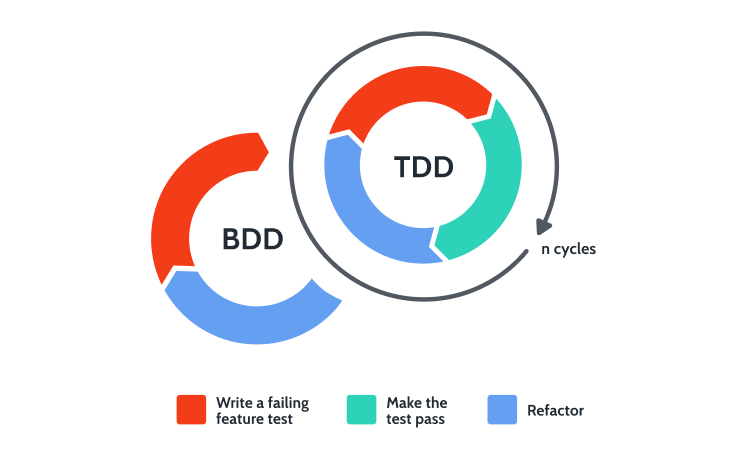Test Pyramid
The test pyramid is a vital concept in agile software quality. It represents the ideal distribution of different types of tests in our software testing strategy. The pyramid consists of three layers: unit tests at the base, integration tests in the middle, and acceptance tests at the top. This pyramid helps us achieve a balance between fast and reliable feedback, ensuring the quality of our software.
Unit Tests
Unit tests are the foundation of our testing strategy. They focus on testing small, isolated units of code, such as individual functions or methods. Unit tests validate the behavior of these units in isolation, allowing us to catch bugs early and ensure the correctness of our code.
Test Driven Development
Test-driven development (TDD) is a popular approach to unit testing, where we write tests before writing the actual code. This practice helps drive the design and implementation of our software, leading to more robust and maintainable code.
Decoupling, Test Isolation
Decoupling and test isolation are crucial principles in unit testing. By decoupling our code, we reduce dependencies and make it easier to test individual units in isolation. This enables us to isolate and identify issues more effectively, leading to faster debugging and easier maintenance. Test isolation ensures that each test case is independent and doesn't rely on the state or behavior of other tests, promoting reliable and consistent test results.
Testing Strategy
A comprehensive testing strategy is essential for agile software quality. It involves defining a systematic approach to testing, considering factors such as test coverage, risk analysis, and prioritization. A well-defined testing strategy helps us allocate our testing efforts efficiently and ensures that critical aspects of our software are thoroughly tested. It also helps us identify areas where different types of tests, such as unit tests, integration tests, or acceptance tests, are most effective.
Integration Tests
Integration tests validate the interaction between different components or modules of our software. They focus on ensuring that these components work together correctly and that the integration points function as expected. Integration tests help uncover issues that may arise when multiple units interact, such as data inconsistencies or communication failures.
Monitoring
Monitoring is an essential aspect of integration testing, as it allows us to observe and track the behavior of our software during integration, ensuring its reliability and performance.
Acceptance Tests
Acceptance tests validate the overall behavior and functionality of our software from an end-user perspective. They ensure that our software meets the requirements and expectations defined by stakeholders. Acceptance tests provide valuable feedback on the user experience, functionality, and usability of our software, helping us ensure its quality.
Behavior Driven Development
Behavior-driven development (BDD) is a popular approach to acceptance testing, where tests are written in a natural language format that focuses on desired behavior and outcomes.
Cooperative Work
In agile software quality, cooperative work plays a crucial role in maintaining and enhancing the quality of our software.
Peer review
Peer review is an essential practice where fellow developers review each other's code to identify issues, provide feedback, and ensure adherence to coding standards. Peer review promotes knowledge sharing, code quality improvement, and early bug detection.
Pair Programming
Pair programming is another cooperative technique where two developers work together on the same task, sharing knowledge and actively collaborating to improve code quality and problem-solving.
